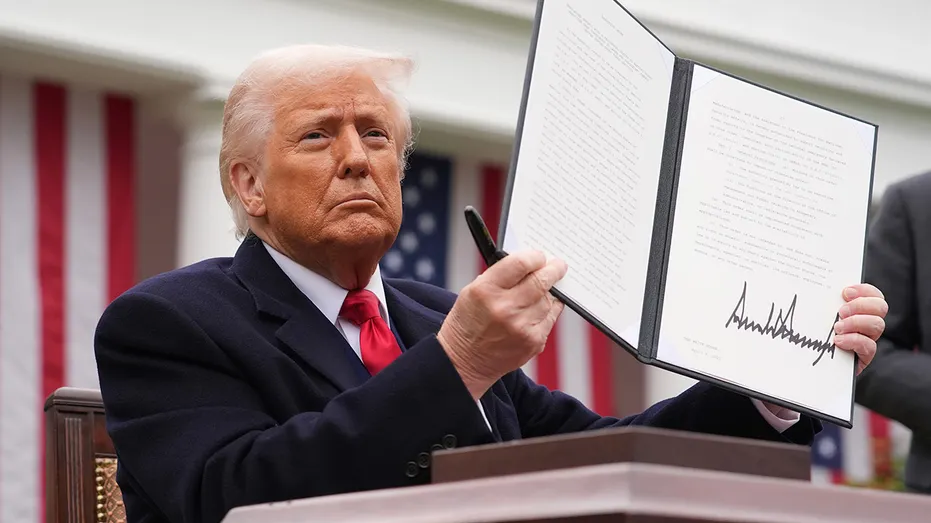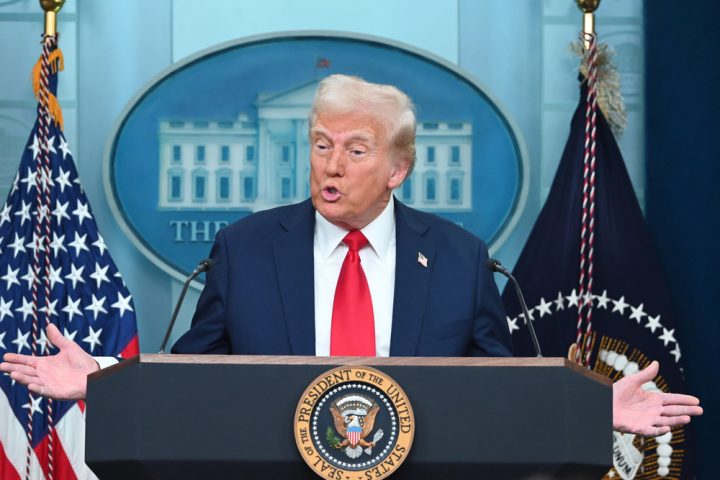The US bond market is teetering on the edge of chaos as Treasury yields surge, triggered by widespread uncertainty over President Donald Trump’s aggressive tariff policies. Long-term Treasuries hit a startling peak overnight, with 30-year yields briefly crossing five percent, a level not seen in such a rapid climb since January 1982. This dramatic spike has sent shockwaves through financial circles, raising questions about the stability of government debt and the broader economy. Meanwhile, the private equity sector braces for a slowdown, caught in the crosshairs of market confusion. Here’s how this unfolding crisis is reshaping the financial landscape.
A Bond Market Under Siege
US government bonds, long viewed as a bedrock of safety, are facing an unprecedented selloff. The 30 year Treasury yield rocketed past five percent before settling at 4.9 percent, up from 4.45 percent prior to Trump’s tariff announcements. This leap echoes a historic surge from over four decades ago when yields hit 14 percent, underscoring the severity of the current upheaval. The 10 year yield, a key global borrowing benchmark, climbed to 4.51 percent before easing to 4.44 percent, reflecting jittery market nerves.
Analysts are sounding alarms. The founder of Tolou Capital Management called it a “meltdown,” while others liken it to a “Liz Truss moment,” recalling the UK’s bond market panic over unfunded tax cuts. Typically, bonds act as a haven during turmoil, but this time, they’re being dumped alongside equities. A Deutsche Bank report labeled the selloff “incredibly aggressive,” suggesting Treasuries are losing their safe haven allure. Pepperstone’s Michael Brown noted a “lack of desire to hold Treasuries,” hinting at eroding trust in US financial stability among institutions.
Trump’s Tariff Gambit: A Mixed Message
At the heart of this storm are Trump’s sweeping tariffs, ranging from 10 percent on UK goods to a staggering 104 percent on Chinese imports. The president’s stated goals are muddled, oscillating between raising revenue to cut the deficit, reviving American manufacturing, and leveraging trade negotiations. Erik Hirsch, co CEO of private equity firm Hamilton Lane, told reporters, “The markets are in turmoil because they aren’t sure what we’re solving for.” He argued that tackling all three objectives simultaneously is implausible, fueling the uncertainty.
Trump’s rhetoric adds to the confusion. He’s called the tariffs both permanent and negotiable, a contradiction that’s left investors grappling with a multivariable puzzle. Hirsch likened it to a complex equation with too many unknowns, predicting the administration will tailor its approach by product and trading partner. Signs of this are emerging: Israel’s leader is discussing trade at the White House, the UK is in talks, and China is retaliating with its own levies.
Liquidity Squeeze and Market Fallout
The bond market’s woes stem partly from practical pressures. Hedge funds betting on Treasuries outperforming interest rate swaps are being squeezed as banks sell bonds to meet client cash demands amid the panic. This has pushed swap rates below yields, disrupting a popular trade and tightening liquidity. Tuesday’s weak demand at a three year Treasury note auction raised red flags, with $39 billion in 10 year notes and a 30 year auction looming as potential flashpoints.
Speculation swirls that nations like China might be offloading Treasuries as a retaliatory jab, though no firm evidence has surfaced. AJ Bell’s Russ Mould flagged this as a possibility, while Brown warned of “market dislocations popping up all over the place.” Trump’s claim that he’s aiming to lower yields to refinance US debt cheaply—a notion he echoed by reposting a video suggesting an intentional economic crash—clashes with reality as yields climb, confounding his stated intent.
Private Equity Feels the Chill
The ripple effects are hitting private equity hard. Hirsch noted a sharp drop in new deals and exits, as uncertainty freezes decision-making. “In a time of uncertainty, you tend not to want to buy something, and you tend not to want to sell something,” he explained. Business owners are holding off, waiting for clarity that may not come soon. The FTSE 100 has plunged 11 percent since the tariffs dropped, outpacing the nine percent dip in the smaller-cap AIM index, hinting at some resilience among less globally exposed firms.
Yet Hirsch sees a silver lining for smaller companies. With fewer multinational supply chains, they’re less vulnerable to trade wars, potentially drawing investors seeking stability. He even suggested the US pivot from global trade could spur the UK to forge stronger ties elsewhere, boosting regional businesses over time.
A Scary Short-Term Outlook
The immediate picture is grim. Yields spiking alongside tumbling stocks defy the norm, where bonds typically rise as equities fall. Analysts point to Trump’s erratic tariff moves as a credibility hit to the US government, with some fearing a loss of faith in its debt. Deutsche Bank warned that if this continues, the Federal Reserve might intervene with emergency bond purchases, reminiscent of the UK’s 2022 crisis response.
For now, markets are a mess of mixed signals and mounting fears. Trump’s tariff strategy, whatever its true aim, has unleashed a bond market tempest that’s testing the resilience of investors, businesses, and policymakers alike. As Hirsch put it, “The market’s gonna need to see some of these variables begin to get locked down” before calm returns. Until then, the Midlands and beyond watch as global finance navigates uncharted waters.







